You’ve probably walked into your home countless times, fumbling for light switches in the dark or manually adjusting brightness throughout the day. What if you could automate your entire lighting system without writing a single line of code or hiring an electrician? No-code lighting automation platforms have transformed this possibility into reality, but choosing the right approach and avoiding costly mistakes requires understanding which components work together seamlessly.
Understanding No-Code Lighting Automation Platforms

While traditional home automation once required extensive programming skills and technical expertise, no-code lighting automation platforms have revolutionized how you can transform your living space.
These innovative solutions eliminate technical barriers by offering intuitive drag-and-drop interfaces that let you create custom lighting schedules and scenes without any programming knowledge.
You’ll find automated lighting controls incredibly accessible through visual configurations that connect multiple devices seamlessly. Most platforms integrate with popular voice assistants like Amazon Alexa and Google Assistant, giving you hands-free control over your entire lighting system.
You can set up automation triggers based on time of day or room occupancy, enhancing both convenience and energy efficiency. This user-friendly approach makes no-code lighting automation perfect for homeowners seeking smart technology benefits without complex technical setups.
Essential Hardware Components for Beginners
Three core hardware components form the foundation of any beginner-friendly lighting automation system.
You’ll need specific equipment to create reliable home automation without complex programming.
Your essential components include:
- Arduino Uno Wi-Fi Rev 2 – Features built-in Wi-Fi capabilities, making it perfect for beginners who want seamless connectivity without extensive coding requirements.
- Relay board with optoisolation – Guarantees safe control of high-intensity lights by allowing low voltage devices to manage higher current loads effectively.
- Solid State Relays (SSRs) – Provide longer lifespan and more reliable switching compared to traditional relays in lighting control systems.
- Bluetooth shield – Enables wireless smartphone control through apps like pfodApp, creating user-friendly interaction with your lighting system.
Adding temperature sensors expands functionality, allowing environmental monitoring and automated responses based on conditions.
Popular Smart Lighting Systems and Their Features

You’ll find today’s smart lighting systems pack impressive features that make automation simple and accessible.
Most popular options include voice control through Alexa or Google Assistant, wireless connectivity that eliminates complex wiring, and intuitive mobile apps that put complete lighting control at your fingertips.
These core capabilities transform how you interact with your home’s lighting without requiring any programming knowledge.
Voice Control Integration
As voice assistants become central to modern smart homes, integrating your lighting system with popular platforms like Amazon Alexa and Google Assistant transforms how you interact with your environment.
Voice control integration eliminates the need for physical switches or smartphone apps, allowing you to manage your lighting automation through simple spoken commands.
Several manufacturers have prioritized seamless voice assistant compatibility:
- Leviton Decora switches and dimmers work directly with Amazon Alexa and Google Assistant for hands-free control
- Lutron Caséta wireless dimmers integrate effortlessly with major voice platforms and smart home ecosystems
- Treatlife devices offer affordable voice-activated switches compatible with leading voice control systems
- Philips Hue supports voice commands through multiple platforms while maintaining full app functionality
This integration creates intuitive lighting control that responds naturally to your daily routines.
Wireless Connectivity Options
When choosing wireless connectivity for your smart lighting system, you’ll encounter several distinct approaches that determine how your devices communicate with each other and your home network.
Philips Hue requires a wireless bridge that connects LED bulbs to Wi-Fi, enabling remote lighting control through mobile apps. Alternatively, Leviton Decora offers hub-free solutions with smart plug-in and hardwired options that work directly with voice assistants.
| System | Connectivity Method |
|---|---|
| Philips Hue | Wireless bridge + Wi-Fi |
| Leviton Decora | Direct Wi-Fi connection |
| Lutron Caséta | Wireless dimmer integration |
Lutron’s Caséta wireless dimmers integrate seamlessly with existing smart home products, supporting everything from basic control to advanced scene automation. Treatlife provides budget-friendly, voice-activated options for multi-location lighting management, while Brilliant’s four-switch panel consolidates multiple functions into one streamlined interface.
Mobile App Management
Most smart lighting systems center their user experience around dedicated mobile apps that transform your smartphone into a detailed lighting command center.
These apps enable extensive mobile app management through intuitive interfaces that let you control multiple lighting zones simultaneously.
Leading platforms offer distinct advantages:
- Philips Hue delivers personalized lighting experiences with remote LED bulb control that adapts to your lifestyle.
- Lutron Caséta provides single-app automation for both new and existing homes with seamless dimmer integration.
- Treatlife offers affordable multi-location control without requiring complex configuration processes.
- Brilliant consolidates various lighting controls into one streamlined interface, eliminating app juggling.
You’ll find these apps eliminate the need for multiple hubs while providing voice integration with Alexa and Google Assistant for hands-free operation.
Setting Up Your First Automated Lighting Scene
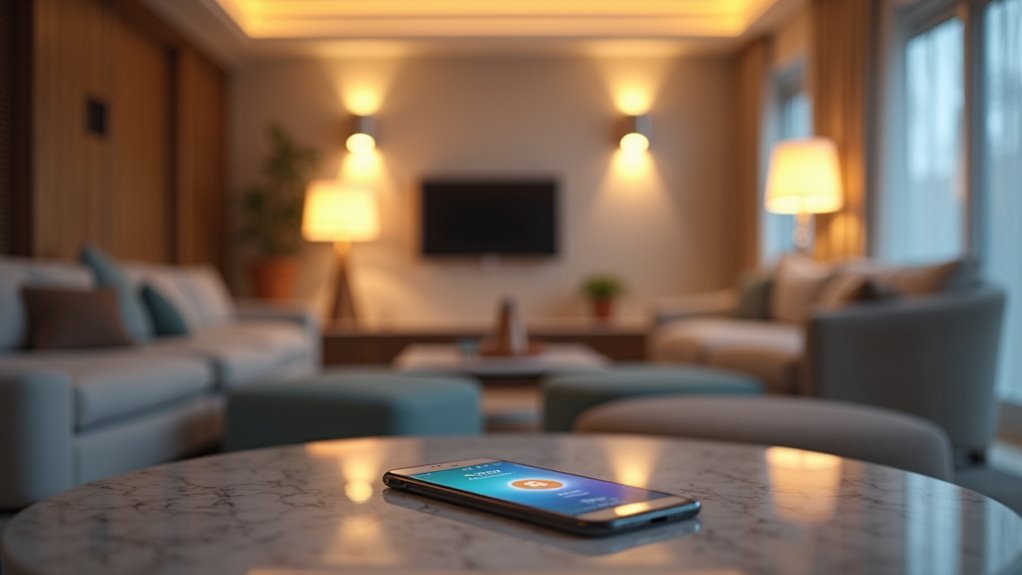
You’ll start by identifying which rooms or areas you want to automate, creating distinct lighting zones that match your daily routines.
Next, you’ll configure the specific parameters for each scene, such as brightness levels, color temperature, and timing triggers that activate your automated sequences.
Finally, you’ll test each scene’s functionality to guarantee your lights respond correctly and make any necessary adjustments for peak performance.
Choose Your Lighting Zones
Strategic placement forms the foundation of effective home lighting automation.
You’ll want to identify key areas where smart lighting delivers maximum convenience and functionality. Start with high-impact spaces that benefit most from automated control.
Create distinct lighting zones using your smart lighting app or control panel. This allows you to customize brightness and color settings for each specific area based on its unique purpose and usage patterns.
Consider these essential zones for your home:
- Entryways and hallways – Welcome guests and guide safe navigation
- Living areas – Adjust ambiance for relaxation or entertainment
- Outdoor spaces – Enhance security and extend usable hours
- Bedrooms – Support sleep routines with gentle dimming schedules
Each zone should serve specific functions while contributing to your home’s overall lighting ecosystem.
Configure Scene Parameters
Once you’ve established your lighting zones, creating your first automated scene transforms those individual areas into a cohesive lighting experience.
Start by identifying specific scenarios like “Movie Night” or “Dinner Party” that’ll enhance your home’s ambiance. Your scene controllers, whether through Philips Hue or Lutron apps, let you customize brightness and color settings with simple taps.
Set timers and triggers so your home lighting automatically adjusts at specific times—dimming at sunset or brightening each morning.
Integration with voice assistants like Amazon Alexa or Google Assistant enables effortless activation through voice commands.
After configuring your scenes, test them thoroughly to guarantee they perform as expected. Make necessary adjustments until you’ve achieved the perfect lighting atmosphere for each scenario.
Test Scene Functionality
After configuring your scene parameters, testing becomes your quality assurance checkpoint to verify everything works smoothly.
You’ll want to activate your automation through multiple methods to guarantee reliability across different triggers and scenarios.
Start your testing process systematically:
- Manual activation – Trigger scenes directly through your app to confirm lights respond with correct brightness and color settings
- Voice command testing – Use Alexa or Google Assistant to activate scenes and verify proper response times
- Scheduled automation – Set temporary test schedules to confirm time-based triggers work accurately
- Motion detection – Walk through areas with motion sensors to test automatic scene activation
Document any inconsistencies you notice during testing.
Fine-tune your settings based on real-world performance, adjusting timing delays or brightness levels as needed for maximum functionality.
Voice Control Integration With Smart Assistants
While traditional light switches require you to physically walk across the room, voice control integration with smart assistants transforms your lighting system into a hands-free powerhouse that responds to simple spoken commands. You’ll find that popular smart home products like Philips Hue and Leviton’s Decora line seamlessly connect with Amazon Alexa and Google Assistant.
| Voice Assistant | Compatible Lighting Brands |
|---|---|
| Amazon Alexa | Philips Hue, Leviton Decora |
| Google Assistant | LIFX, TP-Link Kasa |
| Apple Siri | Nanoleaf, Eve Light Strip |
| Samsung Bixby | SmartThings, GE Lighting |
| Arduino Projects | Official Alexa Skill Integration |
The Arduino Amazon Alexa skill eliminates complex coding requirements, letting you integrate custom projects effortlessly. You’re joining millions of consumers who’ve embraced voice-controlled automation since 2021, personalizing their lighting experiences to match their unique lifestyles.
Mobile App Configuration and Remote Management
You’ll find that setting up your smart lighting through mobile apps requires just a few taps to connect devices and configure your preferences.
Once connected, you can control your lights remotely from anywhere, adjusting brightness, colors, and schedules without being physically present.
The connection methods vary by manufacturer, but most systems use Wi-Fi or Bluetooth pairing that’s designed for users without technical expertise.
App Setup Process
Once you’ve assembled your hardware components, configuring the mobile app becomes your gateway to effortless lighting control from anywhere in your home.
The app setup process requires downloading specialized applications like pfodApp or Blynk, which serve as your primary control panel for managing connected devices.
Your setup involves these essential steps:
- Download the appropriate app and establish connection with your Bluetooth or Wi-Fi-enabled Arduino board
- Create custom menus using pfodDesigner to control multiple devices without coding
- Configure lighting schedules to automatically turn lights on or off at predetermined times
- Test functionality regularly to guarantee reliable remote management and seamless communication
This straightforward configuration transforms your smartphone into a sophisticated control panel, enabling convenient automation while maximizing energy efficiency throughout your home.
Remote Control Features
Several advanced remote control features transform your basic lighting automation into a thorough smart home system that responds to your lifestyle patterns.
You can manage your lights from anywhere using your smartphone or tablet through dedicated mobile apps from systems like Philips Hue and Lutron. Voice integration with Amazon Alexa and Google Assistant lets you control lights through simple voice commands, eliminating the need to reach for your phone.
You’ll create automated schedules and scenes that turn lights on or off at specific times or respond to certain conditions. This remote control capability provides both functionality and flexibility, allowing you to monitor and adjust your lighting system while enhancing convenience and energy efficiency throughout your home.
Device Connection Methods
Three primary connection methods enable seamless mobile app configuration and remote management of your home lighting automation system.
Each method offers distinct advantages for establishing reliable connections between your devices and mobile applications.
The most effective device connection methods include:
- Bridge-based systems like Philips Hue that connect LED bulbs to your wireless network through a central hub
- Direct wireless integration such as Lutron’s Caséta dimmers that connect seamlessly without requiring separate hubs
- App-configured devices like Leviton’s Decora products that integrate with voice assistants including Amazon Alexa and Google Assistant
- Centralized control panels such as Brilliant Smart Home systems that eliminate multiple interfaces
These connection approaches guarantee any homeowner can control their lighting automation remotely through pfodApp and similar platforms, providing thorough management capabilities from anywhere with internet access.
Creating Custom Schedules and Timers
While traditional light switches require manual operation throughout the day, custom schedules and timers transform your home lighting into an intelligent system that adapts to your lifestyle automatically.
You can create custom schedules using user-friendly apps like Philips Hue and Lutron, programming when to turn lights on or off with simple taps. Align automation with your daily routines—outdoor lights activating at sunset, indoor lights switching on before bedtime.
Advanced features like vacation modes simulate occupancy by randomly controlling lights, deterring potential intruders while you’re away.
Vacation mode randomly activates lights throughout your home, creating the illusion of occupancy to discourage burglars during extended absences.
Voice-controlled systems such as Amazon Alexa let you adjust schedules using simple commands, making lighting management effortless and enhancing both convenience and energy efficiency.
Motion Sensor Integration for Automatic Control
Beyond scheduled automation, motion sensors add another layer of intelligence to your lighting system by responding instantly to your presence.
These devices automatically detect movement and trigger lights, creating seamless convenience while maximizing energy efficiency throughout your home.
Modern motion sensors integrate effortlessly with popular smart home platforms, offering customizable control through these features:
- Zone-based control – Target specific areas with adjustable light intensity based on occupancy patterns
- Voice command compatibility – Control settings through Amazon Alexa or Google Assistant integration
- Configurable delays – Set duration timers to prevent frequent on/off cycles in high-traffic areas
- Virtual sensor options – Maintain lighting flexibility when movement isn’t detected, avoiding unnecessary darkness
You’ll appreciate how motion sensors eliminate the need for manual switches while ensuring lights activate exactly when and where you need them most.
Dimming and Color Temperature Automation
Once you’ve mastered motion-triggered lighting, dimming and color temperature automation transforms your home into a dynamic environment that adapts to your daily rhythms and activities.
You can program your dimmers and switches to automatically adjust brightness based on time of day, gradually dimming as bedtime approaches and brightening naturally each morning. This mimics natural light cycles, improving your sleep quality and overall well-being.
Color temperature automation shifts your light fixtures from warm 2700K tones for evening relaxation to cool 6500K for daytime alertness.
Your lighting automatically transitions from cozy warm tones in the evening to energizing cool whites during productive daytime hours.
You’ll create customizable scenes combining both features for specific activities like reading or entertaining. Research confirms that well-designed lighting automation enhances mood and productivity, making it essential for all-encompassing smart home systems.
Troubleshooting Common Setup Issues
What happens when your carefully planned lighting automation starts flickering, fails to respond, or behaves erratically? Don’t panic—most home automation issues stem from simple connectivity problems you can resolve quickly.
Start your troubleshooting process with these essential steps:
- Check power and connections – Verify all devices are properly powered and securely connected, as loose connections frequently cause automation failures.
- Verify device compatibility – Confirm your smart devices match your control system’s technology to prevent unresponsive behavior.
- Update your mobile app – Install the latest version for improved connectivity and bug fixes.
- Use built-in diagnostics – Access app troubleshooting features like device re-pairing and network diagnostics.
When problems persist, consult manufacturer support resources or online community forums for specific error codes and proven solutions.
Expanding Your System With Additional Devices
Your lighting automation system becomes more powerful and versatile as you add compatible devices that work seamlessly with your existing setup. Smart plugs let you control lamps and exterior lighting remotely through your mobile app without coding. Smart switches and dimmers integrate easily, giving you centralized control over multiple light sources.
| Device Type | Primary Function |
|---|---|
| Smart Plugs | Remote control of lamps and exterior lighting |
| Smart Switches | Wall-mounted lighting control |
| Motion Sensors | Automatic lighting based on occupancy |
| Voice Assistants | Hands-free lighting commands |
| Color Bulbs | Customizable lighting scenes |
Voice-activated devices like Alexa or Google Assistant pair effortlessly with your system for hands-free control. Motion and ambient light sensors automate lighting based on occupancy and natural light levels, boosting energy efficiency. Compatible smart bulbs offer color-changing capabilities, creating personalized lighting experiences through simple app interfaces.
Frequently Asked Questions
What Is the Cheapest Way to Automate Your Home?
You’ll find Wi-Fi smart plugs are your cheapest automation option at $10-30 each. They’ll control existing devices without replacements. Alternatively, you can build DIY Arduino projects for under $50 with complete customization.
How Can I Automate My Lights at Home?
You can automate your lights using smart switches like Leviton Decora with voice control, Philips Hue systems, or Lutron Caséta dimmers. Set schedules for sunset timing and create custom menus with Arduino platforms.
What Else Can I Automate in My Home?
You can automate smart plugs for appliances, security cameras with motion detectors, thermostats for energy savings, automated blinds for privacy, and entertainment systems to create customized scenes with single commands.
What Is the Best Home Automation Software?
You’ll find Philips Hue and Lutron are top choices for user-friendly automation. They offer intuitive apps, voice control integration with Alexa and Google Assistant, and don’t require any coding skills to customize your settings.

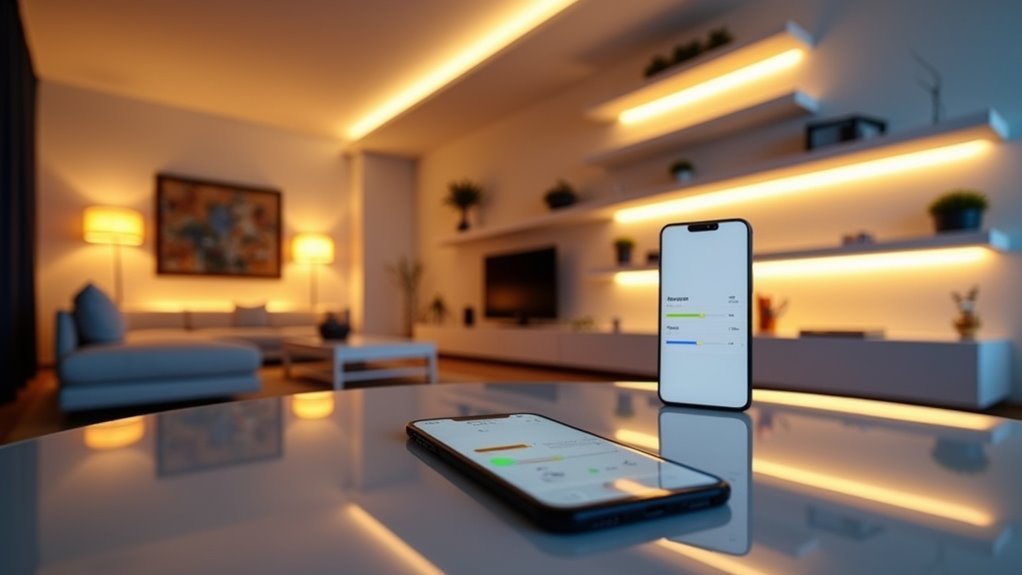
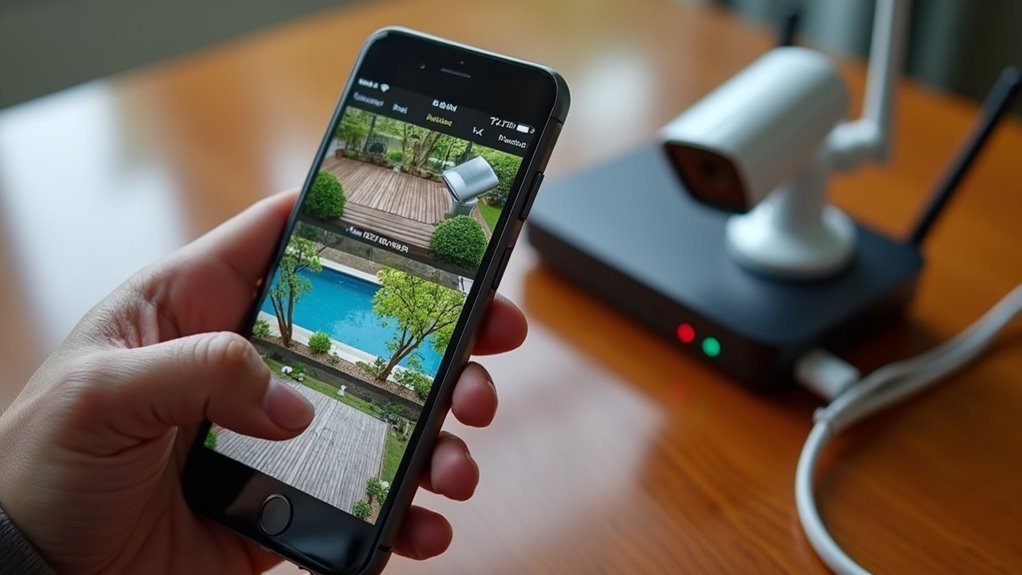
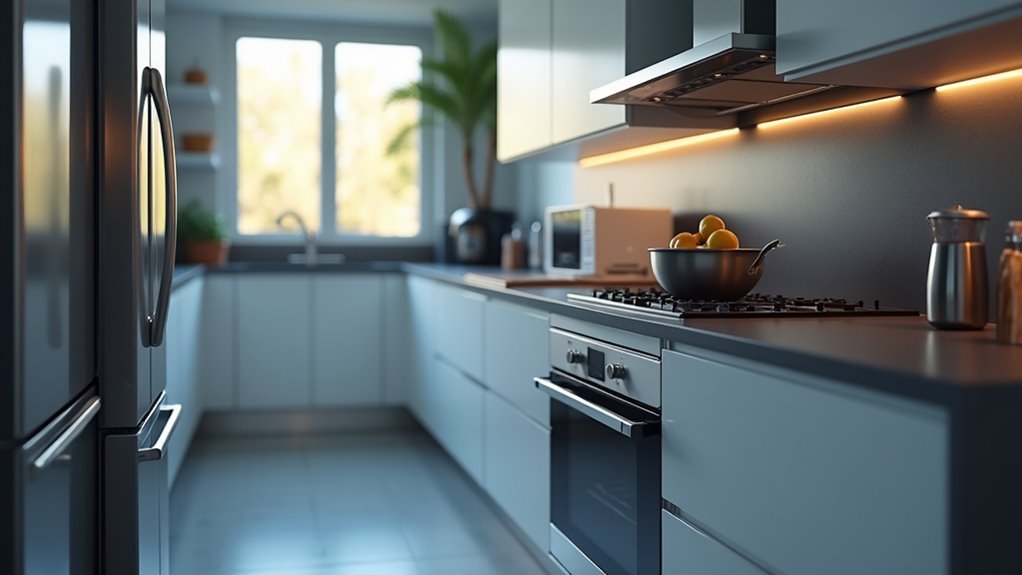
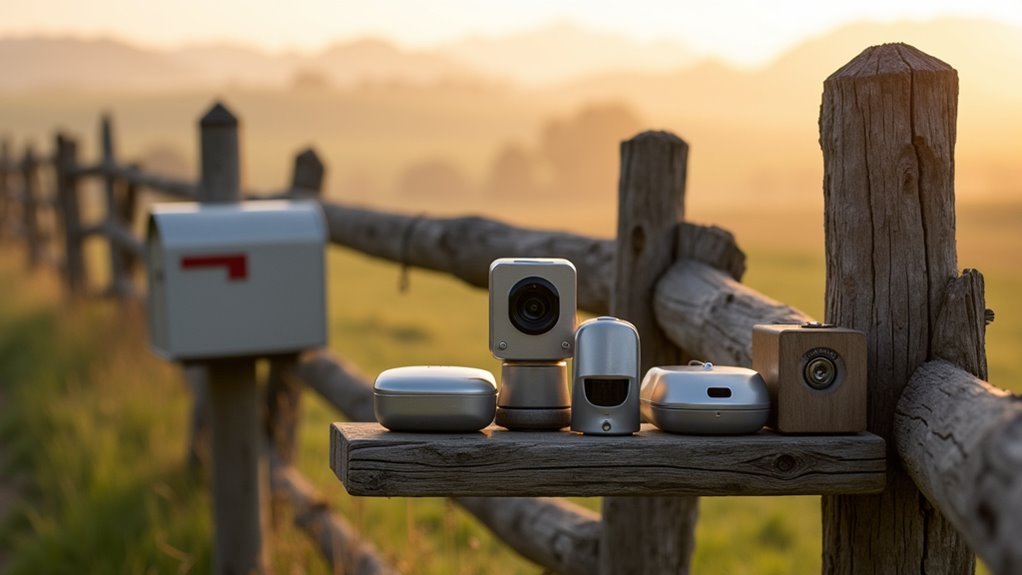
Leave a Reply